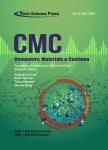Sentiment Analysis of Low-Resource Language Literature Using Data Processing and Deep Learning
作者机构:Department of IT and Computer SciencePak-Austria Fachhochschule:Institute of Applied Sciences and TechnologyHaripur22620Pakistan Software Competence Center HagenbergSoftwarepark 32aHagenberg4232Austria Department of Computer ScienceSchool of Engineering and Digital SciencesNazarbayev UniversityAstana010000Kazakhstan Department of Information TechnologyCollege of ComputerQassim UniversityP.O.Box 1162BuraydahSaudi Arabia
出 版 物:《Computers, Materials & Continua》 (计算机、材料和连续体(英文))
年 卷 期:2024年第79卷第4期
页 面:713-733页
核心收录:
学科分类:12[管理学] 1201[管理学-管理科学与工程(可授管理学、工学学位)] 081203[工学-计算机应用技术] 08[工学] 081104[工学-模式识别与智能系统] 0805[工学-材料科学与工程(可授工学、理学学位)] 0835[工学-软件工程] 0811[工学-控制科学与工程] 0812[工学-计算机科学与技术(可授工学、理学学位)]
主 题:Urdu sentiment analysis convolutional neural networks recurrent neural network deep learning natural language processing neural networks
摘 要:Sentiment analysis, a crucial task in discerning emotional tones within the text, plays a pivotal role in understandingpublic opinion and user sentiment across diverse *** numerous scholars conduct sentiment analysisin widely spoken languages such as English, Chinese, Arabic, Roman Arabic, and more, we come to grapplingwith resource-poor languages like Urdu literature which becomes a challenge. Urdu is a uniquely crafted language,characterized by a script that amalgamates elements from diverse languages, including Arabic, Parsi, Pashtu,Turkish, Punjabi, Saraiki, and more. As Urdu literature, characterized by distinct character sets and linguisticfeatures, presents an additional hurdle due to the lack of accessible datasets, rendering sentiment analysis aformidable undertaking. The limited availability of resources has fueled increased interest among researchers,prompting a deeper exploration into Urdu sentiment analysis. This research is dedicated to Urdu languagesentiment analysis, employing sophisticated deep learning models on an extensive dataset categorized into fivelabels: Positive, Negative, Neutral, Mixed, and Ambiguous. The primary objective is to discern sentiments andemotions within the Urdu language, despite the absence of well-curated datasets. To tackle this challenge, theinitial step involves the creation of a comprehensive Urdu dataset by aggregating data from various sources such asnewspapers, articles, and socialmedia comments. Subsequent to this data collection, a thorough process of cleaningand preprocessing is implemented to ensure the quality of the data. The study leverages two well-known deeplearningmodels, namely Convolutional Neural Networks (CNN) and Recurrent Neural Networks (RNN), for bothtraining and evaluating sentiment analysis performance. Additionally, the study explores hyperparameter tuning tooptimize the models’ efficacy. Evaluation metrics such as precision, recall, and the F1-score are employed to assessthe effectiv



